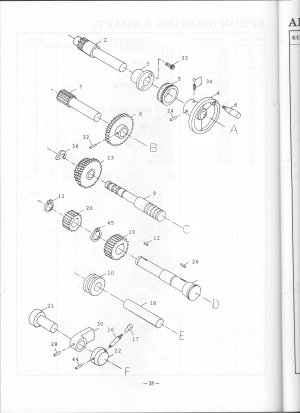- Joined
- Dec 27, 2014
- Messages
- 658
You folks are headed off in the wrong direction about looking for a metric equivalent.
It is a rack and pinion system with a gear reduction in the carriage.
The travel distance will be a function of the pitch diameter of the pinion, so it will be something irrational provided the radius is rational.
One could engineer it so that the gear reduction will work out to an approximation of some whole number. It would be a tricky puzzle to work out the math for the proper gear reduction and pinion size to provide some reasonable distance per turn given a set of size constraints for the gears and shafts. 0.58" is close enough to 0.50 that that could be used as a target for the solution. Probably easiest to just solve it numerically, rather than find it with calculus.
It is a rack and pinion system with a gear reduction in the carriage.
The travel distance will be a function of the pitch diameter of the pinion, so it will be something irrational provided the radius is rational.
One could engineer it so that the gear reduction will work out to an approximation of some whole number. It would be a tricky puzzle to work out the math for the proper gear reduction and pinion size to provide some reasonable distance per turn given a set of size constraints for the gears and shafts. 0.58" is close enough to 0.50 that that could be used as a target for the solution. Probably easiest to just solve it numerically, rather than find it with calculus.



